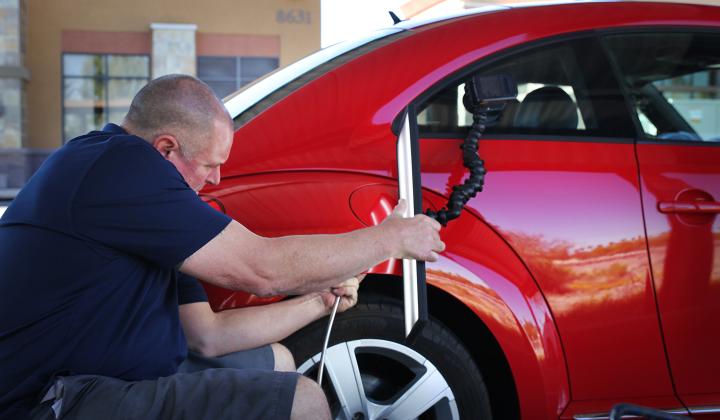Mastering the Art of Paintless Door Ding Repair: A Comprehensive Guide
Imagine you return to your car only
to find a ding marring its sleek surface. It’s a frustrating experience, but
there's good news: you can repair it without paint. Paintless Door Ding Repair
(PDR) is a technique that allows you to remove minor dents without affecting
the car’s original finish. This guide will walk you through mastering PDR,
saving you time and money.
Understanding
Paintless Door Ding Repair
PDR involves manipulating the metal back to its original form. Unlike traditional methods that require filling, sanding, and repainting, PDR maintains the factory paint, which is essential for preserving the car’s value and appearance. Click here to get more information about door dent repair.
Tools
You'll Need
Before diving into the repair
process, gather the necessary tools:
- PDR Rods:
These come in various shapes and sizes to access and push out dents.
- Glue Pull Kit:
Useful for dents where you can't reach the backside.
- Dent Lifter or Slide Hammer: Helps pull out larger dents.
- Tap Down Tools:
For refining and smoothing out high spots.
- LED Light or Reflection Board: Essential for seeing the dent clearly and ensuring
precision.
The
PDR Process: Step by Step
- Assess the Damage
The
first step is to evaluate the dent. Ensure it's suitable for PDR, which
typically works best on minor, shallow dents without paint damage.
- Prepare the Area
Clean
the area around the dent. Dirt and grime can interfere with the repair process.
Use a mild soap and water solution, then dry the surface thoroughly.
- Gain Access to the Dent
For
dents on doors, you'll likely need to remove the inner panel to access the
backside. This might involve removing screws and clips. Use a trim removal tool
to avoid damaging the panel.
- Using PDR Rods
Insert
the appropriate rod behind the dent. Apply gentle pressure to push the metal
back into place. It’s a gradual process – don’t rush it. Use the LED light or
reflection board to monitor your progress. The light helps you see the dent and
ensures you don’t overcorrect.
- Using the Glue Pull Method
For
dents where you can't reach behind, apply a small amount of PDR glue to a
pulling tab and attach it to the dent. Let the glue set for a few minutes. Use
the dent lifter or slide hammer to pull the tab, thereby pulling the dent out.
Once the dent is out, use rubbing alcohol to remove the glue residue.
- Refining the Repair
Even
after the main dent is removed, there might be high spots or slight
imperfections. Use the tap down tool to gently tap these areas flat. Work
slowly and carefully, checking your progress with the reflection board.
- Final Inspection
Once
you’re satisfied with the repair, inspect the area from multiple angles under
different lighting conditions to ensure the dent is completely gone and the
surface is smooth.
Psychological
Techniques for Effective DIY Repair
Mastering PDR isn’t just about the
technical process; it’s also about the mindset. Here are some psychological
strategies to help you succeed:
- Patience and Persistence: PDR requires a steady hand and patience. Rushing
through the process can lead to mistakes. Take breaks if needed and
approach the task with a calm, focused mindset.
- Positive Visualization: Visualize the end result – a smooth, dent-free
surface. This can boost your confidence and keep you motivated.
- Step-by-Step Focus:
Break down the repair into manageable steps. Focusing on one step at a
time can make the process less overwhelming and more achievable.
- Learning from Mistakes: If you make a mistake, view it as a learning
opportunity rather than a setback. Each attempt improves your skills.
Conclusion
Paintless Door Ding Repair is a
valuable skill for any car owner. It saves money, maintains the vehicle’s
original finish, and provides a sense of accomplishment. By understanding the
process, using the right tools, and applying psychological strategies, you can
master PDR and keep your car looking its best. Remember, practice makes perfect
– the more you do it, the better you’ll become.

Comments
Post a Comment